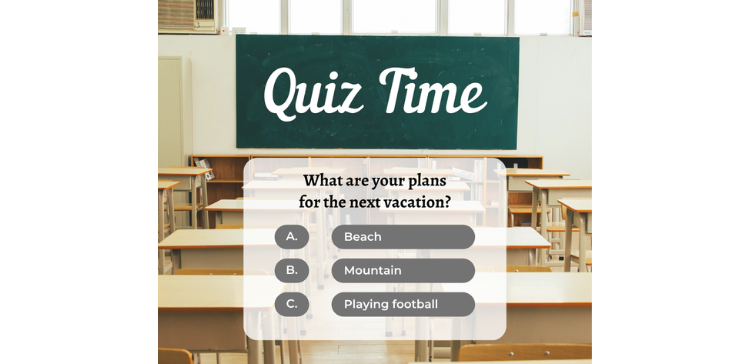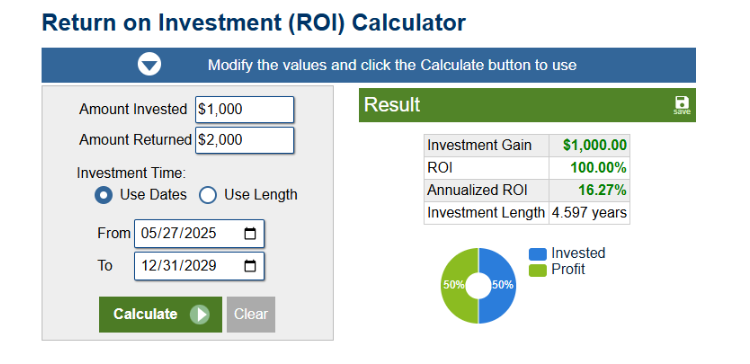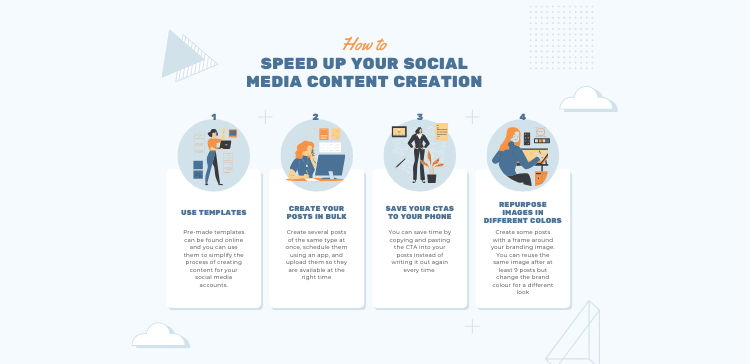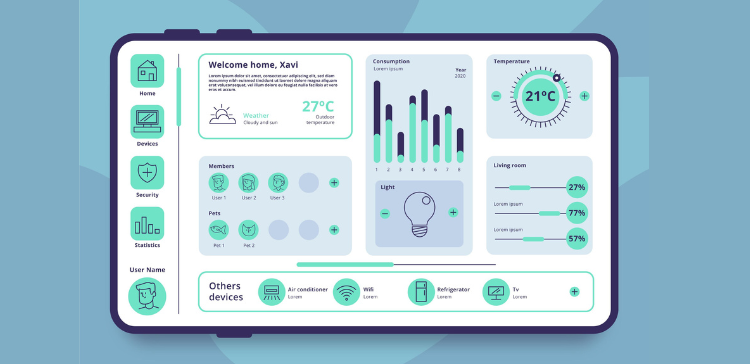Interactive Content: Engaging Audiences in the Digital Age
Let’s be honest, most content gets ignored.
You can pour hours into a blog post, a landing page, or a product description… but if it doesn’t grab your audience in the first few seconds, it’s game over. People scroll, skim, and bounce. That’s just how we consume online.
This is exactly where interactive content earns its place.
Instead of passively hoping your reader sticks around, interactive content gives them something to do. It invites them in. It turns content from a monologue into a conversation.
So, What is Interactive Content?
Interactive content is any format that encourages the user to actively participate, not just read or watch. That could be:
- A quiz that helps someone find the right skincare routine
- A calculator that shows them how much they could save
- A clickable infographic that guides them through a process
- A poll, survey, or slider that they can engage with in real time
Whether it’s on your website, email, or socials, this type of content changes how people experience your brand. It’s not just about information; it’s about interaction.
You’re making your content work harder to engage, convert, and create memorable moments along the way.
And in a digital landscape full of static noise, that kind of interaction is exactly what sets you apart.
The Growing Importance of Interactive Content
You’ve probably noticed that content is everywhere. Blogs, ads, reels, carousels, newsletters… It never stops. And let’s be honest, most of it gets scrolled past in two seconds flat.
So here’s the big question: How do you get people to stop, actually pay attention, and care?
You make content interactive.
That’s exactly why interactive content is gaining so much ground. It’s not just another format. It’s a different way of showing up. One that feels more like a conversation and less like a pitch.
So, why is interactive content important?
1. People are done with passive scrolling
When someone can do something with your content — click a slider, take a quiz, or try a tool — it instantly becomes more personal. It’s not just “here’s what we do” anymore. It’s “let’s figure out what works for you.”
2. Content engagement becomes natural
A lot of brands wonder how to create engaging content, but interactiveness makes it easy! You don’t have to beg for clicks or dwell time when the content is genuinely useful or fun to interact with.
Quizzes get shared, tools get bookmarked, and polls get answered. Suddenly, you’re not chasing attention, you’re earning it.
3. You’re collecting insight without being intrusive
People don’t want to fill out another form. But they will answer a quiz or use a calculator, especially if it gives them something helpful in return.
That’s gold for you: cleaner data, better targeting, and more meaningful campaigns.
4. It gives your brand personality
Static content can feel… well, flat. Interactive content gives you a chance to show up in a more human way. You can be playful, curious, smart, whatever fits your tone, and actually invite people in rather than just talk at them.
5. You stand out, instantly
Here’s the kicker: most brands still aren’t doing interactive content marketing well. So when you do? It cuts through. It makes people pause. And in digital marketing, that pause is everything.
So, if your content isn’t getting the reaction you want, it’s probably not the algorithm’s fault. It might just need to be more interactive.
Types of Interactive Content for Digital Marketing
So, now you know why interactive content is worth doing. But what does that actually look like?
The good news is that you’ve got plenty of options. Whether you want to educate, entertain, convert, or just spark some conversation, there’s a format out there that can work for you (without needing to reinvent your entire content strategy).
Here are some of the best interactive content examples to get people involved instead of just looking.
1. Quizzes

Image credit: canva
Who doesn’t love a quiz? Whether it’s “Which skincare routine suits your skin type?” or “What’s your brand voice?”, quizzes are a fun way to grab attention and deliver personalised results. Plus, they’re ridiculously shareable!
2. Polls & Surveys

Image credit: freepik
Quick to create, and even quicker to answer. These are perfect for getting feedback, validating ideas, or simply sparking a bit of audience input. Add one to your socials or email, and suddenly you’re having a conversation, not just broadcasting a message.
3. Calculators & Tools

Image credit: calculator.net
People love content that helps them make decisions. A cost calculator, ROI estimator, or even a “how much time will this save you?” tool can add real value and keep users on your site longer.
4. Interactive Infographics

Image credit: canva
Do you have valuable data? Don’t just throw it into a chart. Make it clickable, scrollable, or reveal-on-hover. Interactive infographics help your audience explore the info at their own pace and actually enjoy it.
5. Swipe-through Lookbooks or Product Finders

Image credit: freepik
These are especially great for fashion, interiors, or beauty. Let people swipe through a collection or answer a few quick questions to find the perfect product for them. It’s more engaging than a static product grid and helps guide them to the right choice faster.
6. Interactive Videos

Image credit: freepik
Let your audience choose what to watch next, or click through to products shown on screen. It turns passive watching into something way more useful and memorable.
7. Assessments or Scorecards

Image credit: freepik
Do you want to help someone measure their progress or knowledge? An assessment or interactive checklist is a great way to do it, while positioning your brand as helpful, informative, and solutions-focused.
You don’t need to use every format under the sun. Just pick one that fits your audience and content goals, and build from there. The goal isn’t to overwhelm. It’s to make the experience feel tailored, useful, and actually fun to be part of.
Benefits of Interactive Content in Digital Marketing
It’s easy to get excited about the idea of interactive content. After all, it’s fun, it looks good, and it makes your brand feel fresh. But it’s not just a vanity play; interactive content creation provides real, practical benefits.
If you’re wondering whether it’s worth the time or effort, here’s what you actually get out of it.
1. You get real engagement
Let’s face it, most people skim. But when you give someone something they can do, you naturally pull them in. Suddenly, they’re not just reading; they’re interacting, thinking, clicking, and choosing. That’s a totally different level of attention.
2. You stand out in a crowded space
While most brands are still doing the same old blogs and newsletters, interactive content gives you an edge. It instantly feels different. It feels considered, and in a scroll-happy digital world, different is what gets remembered.
3. You collect better insights (without being annoying)
Instead of sending out another survey or asking people to fill in a form, interactive content lets you gather useful data in a way that feels natural. Want to know what your audience cares about? What they struggle with? What they’re looking for? Let them show you.
4. You improve conversions
Tools like product finders and quizzes help guide people toward the right option faster. When you remove the guesswork, you make it easier for them to say yes.
5. You make the experience more memorable
People remember what they’re part of. When someone interacts with your content, they’re more likely to recall your brand later, and that can be the difference between a bounce and a buyer.
6. You quietly boost your SEO
You may be wondering how interactive content can boost your SEO strategy. Time on page… Lower bounce rates… Repeat visits…. These are all things that tell search engines your content’s worth showing. Interactive content helps you tick those boxes!
Top Tips for Creating Effective Interactive Content
Now, let’s move on to how to create interactive content. There’s an art to creating engaging content, and often, it lies within simplicity, so here are some important steps to follow.
1. Start with one clear goal:
Before you create anything, ask: what do I want this to do? Capture leads? Guide product choices? Get shares? A clear goal helps you shape the format, flow, and call to action.
2. Keep it simple:
The best interactive content feels effortless. If users have to overthink how to use it, you’ve lost them. Make every interaction smooth, quick, and obvious.
3. Make it mobile-first:
Most people will see your content on their phone. If it’s clunky, too small to click, or doesn’t load quickly, they’re gone. Always test on mobile before you go live.
4. Give people something in return:
A personalised result, a useful recommendation, a discount… your audience should get value from interacting. That’s what makes them finish using the tool and come back for more.
5. Match it to your tone and brand personality:
Your quiz or calculator shouldn’t feel like a totally different company made it. Make sure the voice, colours, and design fit with everything else you’re doing.
6. Guide them to the next step:
Once someone has engaged, don’t leave them hanging. Suggest a product, offer a download, or link to more content. Interaction should lead to action.
7. Don’t overthink the tech:
You don’t need fancy development. There are easy tools out there to build quizzes, surveys, and calculators without writing a line of code. Start small, you can always scale up later.
8. Test it, then tweak it:
See where people are dropping off. Are they finishing the quiz? Clicking the result? Sharing it? A few smart tweaks can turn average performance into something great.
Challenges with Interactive Content & How to Overcome Them
Creating interactive content can feel exciting, but let’s be honest, it’s not always smooth sailing. There are a few common hurdles you might run into. The good news? Every one of them has a workaround.
“It takes more time than a regular blog post”
True; building interactive and engaging content usually needs more planning, design, and testing. But you don’t have to launch a 10-question quiz with full branching logic on day one. Start small.
A single-question poll or a clickable product guide can be up and running fast, and still make a big impact.
“I don’t have a technical team”
You don’t need one. There are loads of no-code tools that let you create interactive content (like quizzes or calculators) with drag-and-drop builders. And if you do want something more custom?
This is where working with a creative agency can save you hours and give your content that polished, on-brand feel.
“I’m not sure what format to use”
That’s fair; there are a lot of options. The easiest fix is to ask: what would actually help your audience? If they’re trying to choose a product, try a quiz. If you’ve got strong visuals, go for an interactive gallery. Keep it tied to what your customer needs, not just what looks flashy.
“It might not work on mobile”
This one’s valid, especially if you’ve built something that looks great on a desktop but turns into a mess on a small screen. The fix? Always design mobile-first. Check touch targets, loading speed, and responsiveness.
Mobile is where most of your audience lives, so don’t treat it like an afterthought.
“What if no one engages with it?”
Then it’s probably not delivering clear value, or you’re not promoting it enough. Make sure the content answers a real need. Share it across your channels, add it to your emails, and embed it where it makes sense on your site.
Sometimes the issue isn’t the content; it’s that not enough people are seeing it.
“It’s hard to measure success”
Not if you set the right goals from the start. Are you trying to collect leads? Drive product discovery? Keep people on-page longer? Match the format to that goal, and track the right things (completions, time on page, clicks, etc.). The data’s there; you just need to know what you’re looking for.
Case Studies – Brands Winning with Interactive Content
One of our top tips for creating engaging content is to look at other brands that have done it well! This is a great way to gain inspiration and get an understanding of what works and what doesn’t.
So, let’s take a look at some of the best examples of interactive content out there today.
Gucci
Immersive Mixed Reality Fashion Film
Gucci embraced mixed reality by launching an immersive version of its documentary, “Who is Sabato De Sarno? A Gucci Story,” designed for Apple’s Vision Pro headset.
This experience allows viewers to engage with the brand’s narrative in a multi-dimensional space, blending art and entertainment to deepen emotional connections without direct e-commerce prompts.
Burberry
Augmented Reality Shopping Experience
Burberry introduced an AR feature in its app, enabling customers to visualise products in their environment before purchasing.
This interactive approach not only enhances the shopping experience but also bridges the gap between digital and physical retail spaces.
Jennifer Taylor Home
Leveraging User-Generated Content
Luxury furniture brand Jennifer Taylor Home integrated user-generated content (UGC) into its marketing strategy, showcasing real customer photos and experiences.
This authentic content led to a 49.7% increase in conversion rates, demonstrating the power of interactive, community-driven marketing.
IKEA
Augmented Reality Catalogue
IKEA’s AR catalogue allows customers to place virtual furniture in their homes using their smartphones.
This interactive tool helps users make informed purchasing decisions by visualising how products fit into their spaces, enhancing customer confidence and satisfaction.
Louis Vuitton
Digitally Integrative In-Store Experiences
Louis Vuitton has transformed its retail spaces by incorporating interactive digital screens and immersive installations.
These experiential elements encourage customers to engage with the brand on a deeper level, blending the physical and digital realms seamlessly.
Don’t Just Tell Your Story, Let People Join It
Interactive content does more than grab attention. It pulls people in, gives them something to do, and leaves them feeling like they were part of the journey, not just an observer.
It’s one of the most effective ways to turn passive visitors into engaged users. And whether you’re building a quiz, a product finder, or something as simple as a poll, it’s the interaction that creates the connection.
If you want your brand to stick, not just scroll past, this is the kind of content you should be creating.
And when you pair that interactivity with strong storytelling content, you’ve got something even more powerful: an experience people actually remember.
So the question is: are you ready to make your content something people want to interact with? If the answer’s yes, contact Appnova today and let’s get started.
Subscribe To Us
Our Services
Categories
Subscribe To Us
Contributors
Categories

This website uses cookies so that we can provide you with the best user experience possible. Cookie information is stored in your browser and performs functions such as recognising you when you return to our website and helping our team to understand which sections of the website you find most interesting and useful. Third party cookies such as Google Analytics is also used on this site to provide analytics in order to better understand the user engagement on our site.
You can adjust all of your cookie settings by navigating the tabs on the left hand side.
Strictly Necessary Cookie should be enabled at all times so that we can save your preferences for cookie settings.
If you disable this cookie, we will not be able to save your preferences. This means that every time you visit this website you will need to enable or disable cookies again.







0.Comments